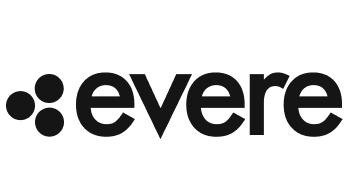Nonprofit fundraising is more than just raising money—it’s about building meaningful relationships, telling compelling stories, and creating sustainable streams of support for your mission. Whether you're a grassroots initiative or an established 501(c)(3), understanding the fundamentals of effective fundraising is the key to long-term success.
At its core, successful fundraising relies on:
- A clear and mission-aligned case for support
- Defined fundraising goals and metrics
- A diversified revenue strategy (grants, donations, events, earned income)
- Strong back-office systems for compliance and donor management
Newer organizations can benefit from working with fiscal sponsors that provide financial infrastructure. See how this support model helps nonprofits stay compliant while focusing on fundraising growth.
Creating Effective Campaigns
A fundraising campaign without a strategy is just a wish. Great campaigns combine emotion, urgency, and clarity.
Key Components of a Successful Campaign:
- Compelling messaging that tells a story and connects emotionally
- Targeted outreach segmented by donor types (individuals, foundations, corporate)
- SMART goals (specific, measurable, achievable, relevant, time-bound)
- Strong calls-to-action across all channels
Successful nonprofits often build campaigns around milestones, giving days, or urgent needs. Align your campaigns with the mission to increase response rates—just like mission-driven organizations backed by Group 36.
Leveraging Technology in Fundraising
Today’s fundraising landscape is digital-first. If you’re not using technology to reach and retain donors, you’re likely missing out.
Digital Tools to Consider:
- CRM platforms like Bloomerang or Salesforce for donor tracking
- Email marketing through platforms like Mailchimp or ConvertKit
- Online donation tools that integrate with your website
- Peer-to-peer fundraising and social media giving campaigns
Working with a fiscal sponsor like Group 36 can simplify the tech stack by offering access to donation processing systems, financial tracking tools, and online fundraising portals.
Engaging with Donors
Building donor relationships is what transforms one-time contributors into long-term supporters. Engagement goes beyond a thank-you email—it's about creating a donor journey that educates, inspires, and rewards participation.
Best Practices:
- Personalize your communications
- Share impact updates and success stories
- Host small stewardship events or appreciation campaigns
- Ask for feedback and involve donors in your planning
Donor engagement also builds trust and boosts retention. Organizations that prioritize this relationship-building often grow faster and more sustainably. Want help crafting your engagement plan? Reach out here to get expert support.
Planning Major Fundraising Events
Events are a powerful way to raise funds, connect with your community, and attract media attention. From gala dinners to virtual telethons, events bring your mission to life.
Event Planning Checklist:
- Define the event’s purpose and fundraising goal
- Secure sponsors and in-kind partners
- Choose the right venue (in-person or online)
- Promote early and often across all platforms
- Follow up with attendees and donors post-event
Need help managing event funds, vendor payments, or sponsorship reporting? Fiscal sponsors like Group 36 can provide the back-office support that keeps your event running smoothly and compliantly.
Innovative Fundraising Ideas
Creativity sets great fundraisers apart. Try these fresh approaches to engage donors and diversify income:
- Crowdfunding campaigns tied to specific impact goals
- Donor subscription models or “impact clubs”
- Collaborations with local artists or businesses
- Text-to-give campaigns
- Matching gift challenges
- Volunteer-led micro-fundraisers on social platforms
Want to test new fundraising models but don’t have nonprofit status yet? Fiscal sponsorship allows you to experiment with grant funding and donation-based revenue quickly—learn more here.
Conclusion
Mastering nonprofit fundraising isn’t about following a single formula—it’s about understanding your audience, staying agile, and building systems that allow your fundraising to scale with your impact. From effective campaigns to donor engagement and tech integration, every nonprofit has the potential to grow smarter and raise more with the right strategy.

